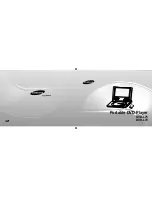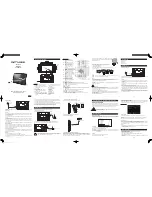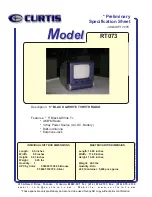
10
General
Initial Operation
This section is a general introduction to the organisation of the instrument and is intended to be
read before using the generator for the first time. Detailed operation is covered in later sections
starting with Standard Waveform Operation.
In this manual front panel keys and sockets are shown in capitals, e.g. STATUS, AUX OUT; all
soft
−
key labels, entry fields and messages displayed on the LCD are shown in a different
type
−
font, e.g
.
WAVEFORM
,
sine
.
DDS Principles
In this instrument waveforms are generated by Direct Digital Synthesis (DDS). A phase
accumulator is incremented at a rate proportional to the required output frequency. The most
significant 12 bits of the accumulator are used to address a look-up table ROM that converts the
phase information into sinewave amplitude data; this data is then passed to a 10-bit Digital-to-
Analogue Converter (DAC) which produces the output waveform. For triangle waves the ROM
look-up table is by-passed and the phase accumulator output is passed directly to the DAC.
At low frequencies all 4096 points in the output wave are stepped through, but as the frequency
increases points are progressively missed out. Sinewaves and triangles are subsequently filtered
to smooth the steps in the DAC output; this technique ensures good sinewave purity up to the
maximum frequency of the generator but the practical limit to which excellent triangle linearity is
maintained is only about 100kHz. Squarewaves and pulses are derived from the sinewave using
a variable threshold comparator; this permits symmetry control of these waveforms across the
whole instrument frequency range.
The major advantages of DDS over conventional analogue generation are:
•
Frequency accuracy and stability is that of the crystal oscillator.
•
Frequencies can be set with high resolution from mHz to MHz.
•
Low phase noise and distortion.
•
Very wide frequency sweeps are possible.
•
Fast phase continuous frequency switching.
•
In addition, being a digital technique, it is easier to make every parameter programmable from
the keyboard, or remotely via the USB or RS-232 interfaces.
Switching On
Switch on the generator using the ON/OFF switch on the rear panel. To fully disconnect from the
AC supply unplug the mains cord from the back of the instrument or switch off at the AC supply
outlet; make sure that the means of disconnection is readily accessible. Disconnect from the AC
supply when not in use.
At power up the generator displays the installed software revision and conducts a self-test.
Power-on self-test takes a few seconds, after which the status screen is displayed, showing the
generator parameters set to their default values, with the MAIN OUT output set off. Refer to the
System Operations section for how to change the power up settings to either those at power
down or to any one of the stored settings. Recall the status screen at any time with the STATUS
key; a second press returns the display to the previous screen.
Change the basic generator parameters as described in the Standard Waveform Operation
section and switch the output on with the ON key; the lamp above the key will light to show that
output is on.












































